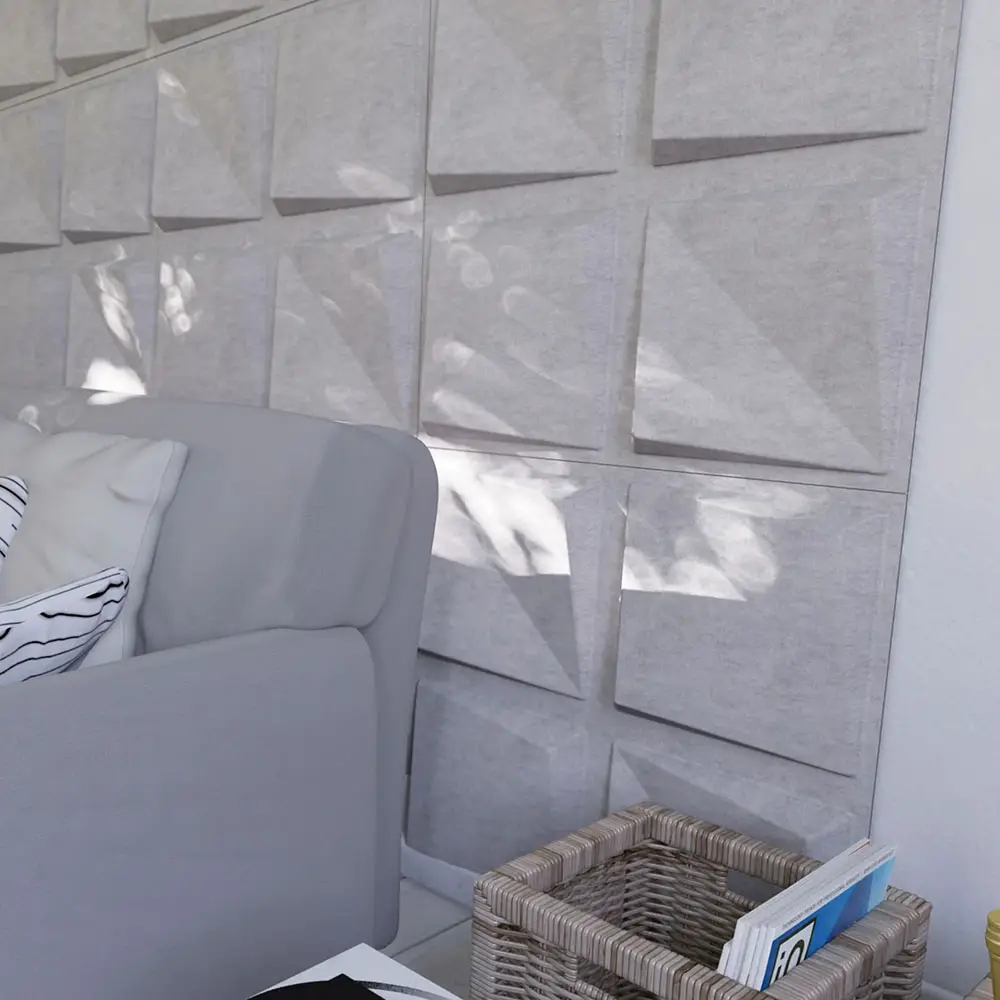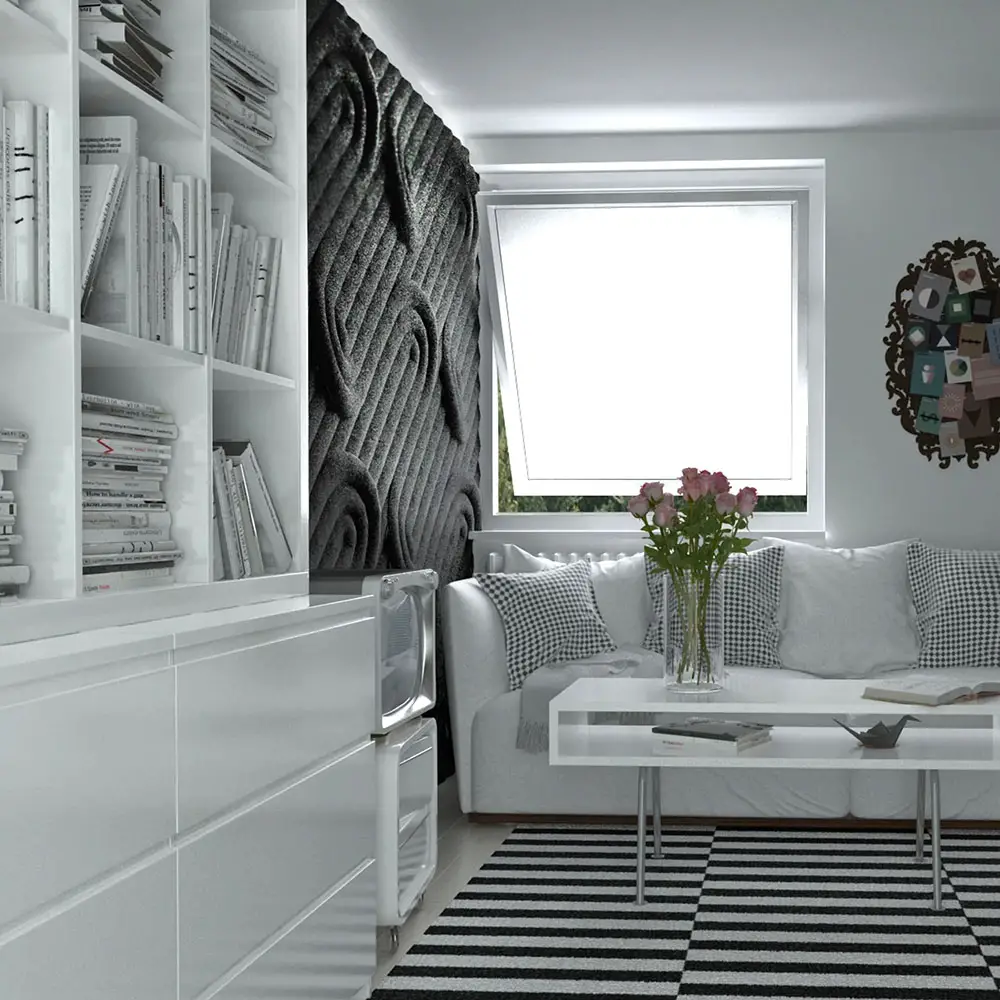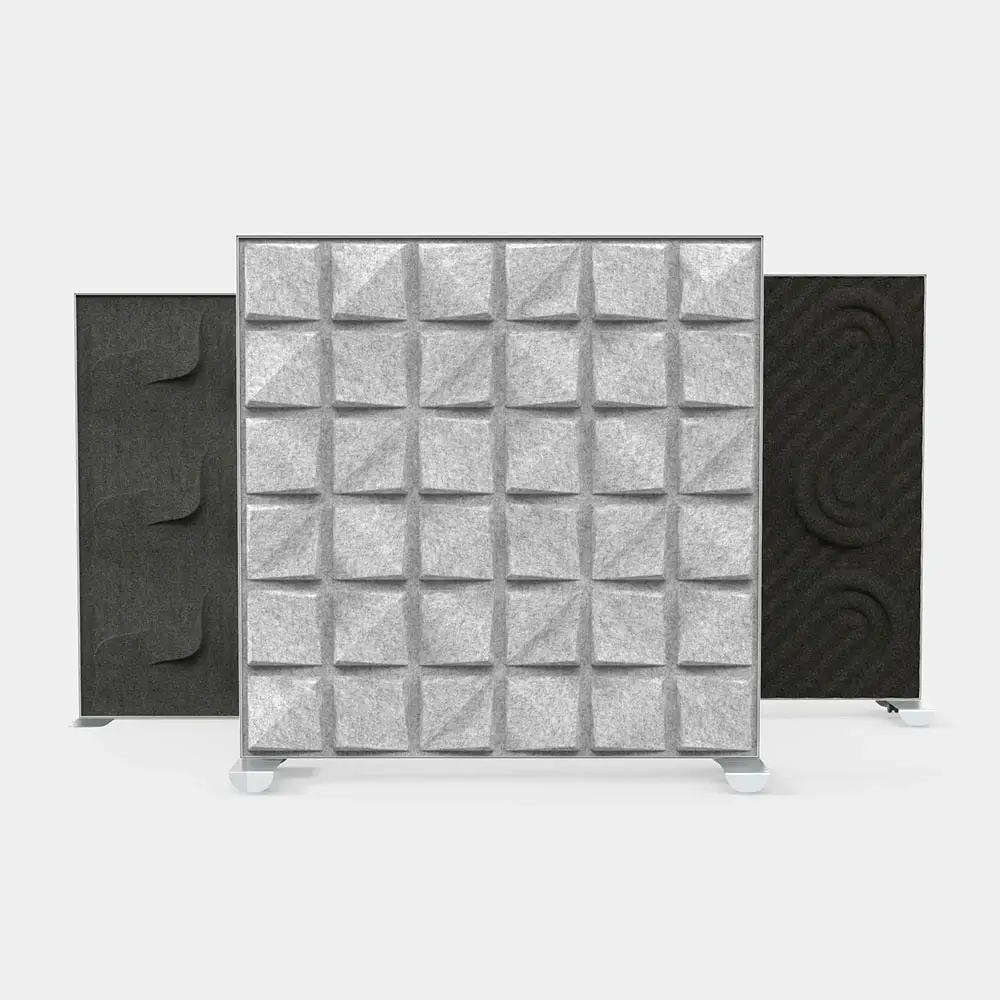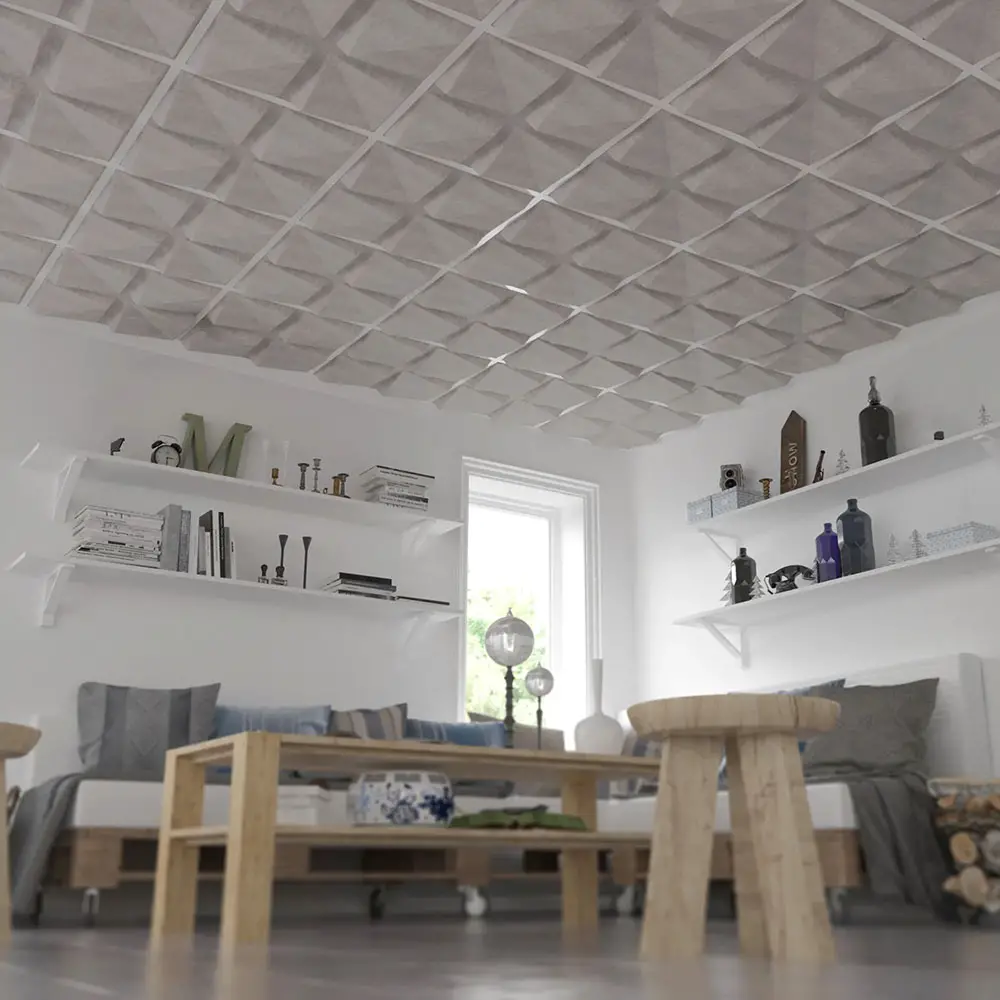*We are a reader-supported website. When you buy through links on our site, we may earn a small affiliate commission at no extra cost to you. Home Media Entertainment does not accept money for reviews.*
Sound waves travel in a straight line, directly away from the speaker. This means that the reflection points which cause echo and reverberation will be located directly in front of the speaker.
If your only speakers are located near the TV or projector, this point will be the back wall that is opposite of the screen. Generally, acoustic panels on the back wall are enough if you just have front-facing speakers.
For home theaters with surround sound, panel placement is a bit more nuanced. Let’s explore where to place the acoustic panels to create a beautiful listening experience.

How to Set Up Acoustic Panels in Your Home Theater
Back Wall
As sound travels away from the two speakers on either side of the screen, it moves past your head(s) and hits the back wall, reflecting in multiple directions. The back wall is generally the strongest point of reflection, so it’s necessary to place acoustic panels directly in the path of the sound waves.
Draw a straight, imaginary line directly outward from either speaker to the opposite wall. Place the acoustic panels here. To make things easier, you can walk around the room with a small mirror, marking off the points on the wall with a pencil where the speaker is visible in the mirror.
Though the number and size of panels will vary based on the brand you choose and the size of your space, you should aim to cover at least 4-6 feet of the wall with acoustic treatments – these will disperse the sound waves, putting you directly in the cinematic action.

Side Walls
Acoustic panels are critical for side walls, as these are the closest to your ears. And because they’re in the direct path of your ears, they have a huge impact on sound quality.
If you’re looking to go all-out on your home theater setup, you should purchase sound-absorbing panels with a high noise reduction coefficient (NRC) to place on the side walls. Ideally, you should choose panels with an NRC of 0.8 or greater (the higher the better). These will absorb most of the sound waves and prevent echo & reverb from reaching your ears.
Screen Wall
Assuming that your screen doesn’t cover the entire wall, you also need to place acoustic panels on either side of the screen. These will reduce the interference of sound waves traveling across the screen. And if you’re using a projector or hanging fabric screen, place the panels directly behind the screen to mitigate further acoustic degradation.

Windows
In a perfect world, a home theater wouldn’t have any windows. But if the home theater wasn’t in the blueprint when your home was built, you’ll just have to make do. If there are windows, cover them with acoustic curtains or thick blackout curtains to absorb sound and blockout external light.
Ceiling
Acoustic panels aren’t limited just to the four walls in your home theater. You can drastically improve the listening quality in the space by outfitting your ceilings with acoustic treatments. You’ll notice the difference immediately, especially if you have high ceilings made from hard surfaces like cement, wood, or ceramic tile.
If your budget doesn’t allow for ceiling panels, your floor is the next best thing. If you already have carpet flooring, you’re already set. If it’s hardwood or tile, add a large area rug to absorb sound waves traveling down from the ceiling.

Benefits of Acoustic Home Theater Panels
If you want to take your home theater to the next level, acoustic panels will help you get there. Here are just a few of the benefits you’ll experience in your new cinematic space:
- Sound absorption – Acoustic panels will reduce the echo & reverberation generated by your speakers and hard, reflective walls. They’ll also eliminate ambient noise from your washer, dryer, furnace, and other distracting sources.
- Sound dispersion – Sound absorption is a good start, but dispersion panels will completely transform your listening experience. This combination will ensure that sounds don’t just “die” when they hit the wall, but rather, they are dispersed to create an energetic feel across the entire room.
- Soundproofing – Home theaters are meant to be intense audio experiences, but only for the ones watching movies. Most home theaters don’t account for the sound outside of the room, which will disturb and quickly annoy your family members. Acoustic panels will contain the sound to the theater space and prevent leakage to other rooms in your home.
- Improved aesthetics – Aesthetics won’t matter much when the lights are off. But when you want to quickly show it off to guests, looks matter. The right acoustic panels should look, feel, and sound good in your space.

If you’re ready to take your home theater to the next level, outfit your walls with acoustic panels – your ears will thank you.